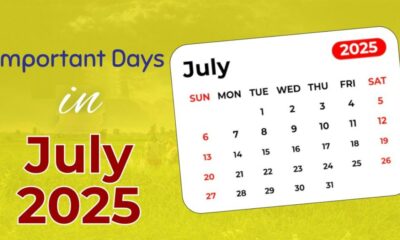Startup
Creating a Product? Here’s Some Important Things to Keep in Mind

Embarking on the journey of creating a product is akin to navigating a complex puzzle, where each piece contributes to the overall picture of success. As we delve into the intricacies of product creation, consider this guide a compass, steering you through the essential considerations that will pave the way for a well-conceived and market-ready offering. So, let’s explore the terrain of product development, keeping in mind the nuanced details that can transform your concept into a tangible and successful reality.
1. Defining Your Target Audience
Conduct thorough demographic research to pinpoint the characteristics, preferences, and behaviors of your potential customers. Take into account variables like geography, gender, age, and socioeconomic level to build a thorough profile. Go beyond demographics and examine your audience’s interests, values, and lifestyle preferences by delving into psychographic information. Understanding their goals and difficulties will help you design your product to fulfill particular requirements. This clarity in defining your target audience not only guides product development but also shapes your marketing strategy, enabling you to communicate effectively and resonate with the intended consumer base.
2. Conducting Market Research
Start by analyzing industry trends, identifying competitors, and scrutinizing consumer behavior to gain a nuanced understanding of the market landscape. Examine current market demands and unfulfilled needs to identify any holes that your solution might be able to fill. Examine rivals closely to grasp their products and services as well as to gain insight into their accomplishments and faults. This research serves as a strategic compass, guiding your product development by offering insights into customer expectations and competitive positioning. A well-informed approach to market research ensures that your product aligns with market demands and stands out in a crowded marketplace.
3. Establishing Clear Objectives and Goals
Begin by defining the overarching purpose of your product, whether it’s addressing a specific problem, fulfilling a need, or enhancing convenience. Clearly articulate measurable goals that align with your broader vision, providing a roadmap for development. These objectives serve as benchmarks, guiding the decision-making process and ensuring that every aspect of your product contributes cohesively to its intended purpose. By setting clear goals, you not only streamline the development process but also create a framework for evaluating success, fostering accountability, and maintaining a focused trajectory throughout the product lifecycle.
4. Prioritizing User Experience (UX) Design
Invest in intuitive interfaces and user-friendly design to ensure a seamless and enjoyable interaction for your target audience. Incorporate clear navigation, visually appealing aesthetics, and responsive functionality to enhance the overall usability of your product. Thoughtful UX design goes beyond aesthetics, considering the user’s journey from initial engagement to task completion. By prioritizing user experience, you not only cultivate customer satisfaction but also foster brand loyalty, as positive interactions contribute to the overall perception and success of your product in the market.
5. Developing a Scalable and Sustainable Model
Ensure your business model allows for growth and adaptation to changing market conditions, fostering resilience. Additionally, integrating sustainable practices, such as eco-friendly sourcing and manufacturing, contributes to the overall longevity of your product and minimizes environmental impact. One aspect to emphasize is the adoption of sustainable packaging materials, aligning with eco-conscious consumer trends. Environmental friendly packaging not only resonates with environmentally aware customers but also reflects a commitment to responsible business practices, contributing to both the ecological and economic sustainability of your product.
6. Implementing Effective Marketing Strategies
A comprehensive marketing plan should encompass a multifaceted approach, leveraging digital platforms, social media, and traditional channels to generate widespread awareness. A key component of effectively articulating the value proposition of your product is creating engaging and focused content. Consistency across messaging and a keen understanding of your audience contribute to building a robust brand presence. Whether through influencer collaborations, SEO optimization, or strategic partnerships, the aim is to create a resonance that goes beyond mere visibility, fostering a lasting connection between your product and the intended market.
Conclusion
Remember, a well-defined purpose and clear objectives serve as your guiding compass while prioritizing user experience ensures lasting customer satisfaction. Integrating sustainable practices, including eco-conscious packaging, contributes not only to market competitiveness but also to environmental responsibility. As you embark on this venture, recognize that every decision made in the product creation process plays a role in its market reception.
-

 Sports4 weeks ago
Sports4 weeks agoFIFA Club World Cup 2025: Complete List of Qualified Teams and Groups
-

 Sports3 weeks ago
Sports3 weeks agoAl Ahly vs Inter Miami, 2025 FIFA Club World Cup – Preview, Prediction, Predicted Lineups and How to Watch
-
Health1 week ago
Back to Roots: Ayurveda Offers Natural Cure for Common Hair Woes
-
World4 weeks ago
Omar Benjelloun: Strategic Architect Behind Major Financial Deals in the MENA Region
-

 Tech2 weeks ago
Tech2 weeks agoFrom Soil to Silicon: The Rise of Agriculture AI and Drone Innovations in 2025
-

 Sports3 weeks ago
Sports3 weeks agoFIVB Men’s Volleyball Nations League 2025: Full Schedule, Fixtures, Format, Teams, Pools and How to Watch
-

 Science4 weeks ago
Science4 weeks agoEverything You Need to Know about Skywatching in June 2025: Full Moon, New Moon, Arietid Meteors, and Planetary Marvels
-

 Startup3 weeks ago
Startup3 weeks agoHow Instagram Is Driving Global Social Media Marketing Trends























